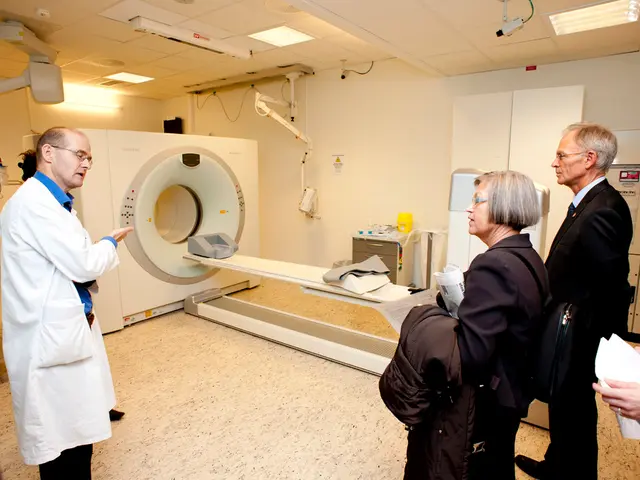Glaucoma Caused by New Blood Vessels: Signs and Remedies
Neovascular Glaucoma (NVG) is a serious eye condition that can potentially lead to permanent vision loss. It's important to understand what NVG is, its causes, symptoms, and treatment options.
NVG is a type of secondary glaucoma, developing due to underlying health conditions such as diabetic retinopathy, ocular ischemic syndrome, or ischemic central retinal vein occlusion. Two of the most common systemic diseases leading to NVG are diabetes and ischemic retinal vascular diseases, like retinal vein occlusion and ocular ischemic syndrome [1][2][3][5].
In the early stages, a person may experience no symptoms. However, as the condition progresses, light sensitivity and blurry vision may be among the first signs. As it advances further, a person may experience pain, eye redness, and a decrease in vision [4].
The diagnosis of NVG involves assessing the pressure inside the eye, the health of the optic nerve and anterior chamber, the drainage angle of the eye, and a person's visual field. Imaging tests may also be performed to help diagnose and monitor the progression of NVG [6].
The management of NVG often involves a team of specialists, including glaucoma and retina specialists, ophthalmologists, and primary care physicians. The goal of treating NVG is to manage reduced blood flow to the retina and reduce the formation of new blood vessels.
Doctors identify the underlying cause of NVG to effectively treat it. If the cause is not already clear, a doctor may take a thorough medical history and order additional tests to confirm conditions such as diabetes or CAD [7].
Treatment for NVG involves treating or managing the underlying cause of the condition and reducing eye pressure to help prevent damage to the optic nerve. For lowering pressure in the eye, the first-line approach is often eye drops or oral medications. In some cases, a less invasive laser procedure may be recommended to destroy the ciliary body, which is the part of the eye that produces fluid [4].
If medical and laser therapies are unsuccessful, doctors may recommend inserting a tube shunt into the eye to reduce eye pressure. It's crucial to seek medical attention promptly, as increased pressure in the eye due to NVG can result in vision loss if left untreated [8].
The management of NVG can be complex, but early detection and appropriate treatment improve the outlook for those with NVG. It's always best to consult with a healthcare professional for personalised advice and treatment options.
Science plays a crucial role in understanding eye health, particularly conditions like Neovascular Glaucoma (NVG), which is often associated with medical conditions such as diabetic retinopathy or coronary artery disease. Regular check-ups andmedical tests can help in early detection of NVG, as its causes, symptoms, and treatment options need to be thoroughly examined by medical-health professionals. Maintaining good health-and-wellness, including eye-health, requires awareness and prompt action when facing medical conditions such as NVG.




